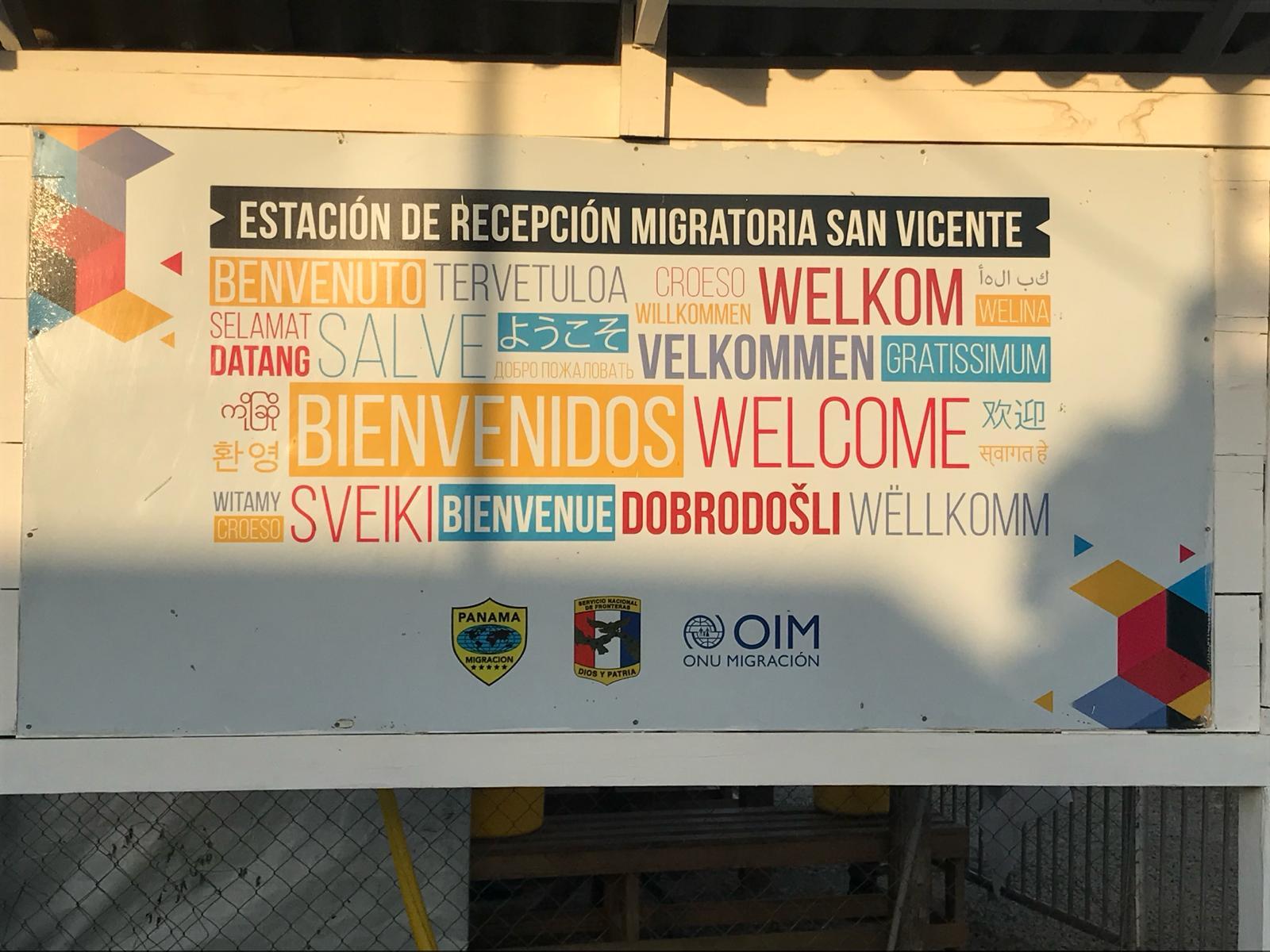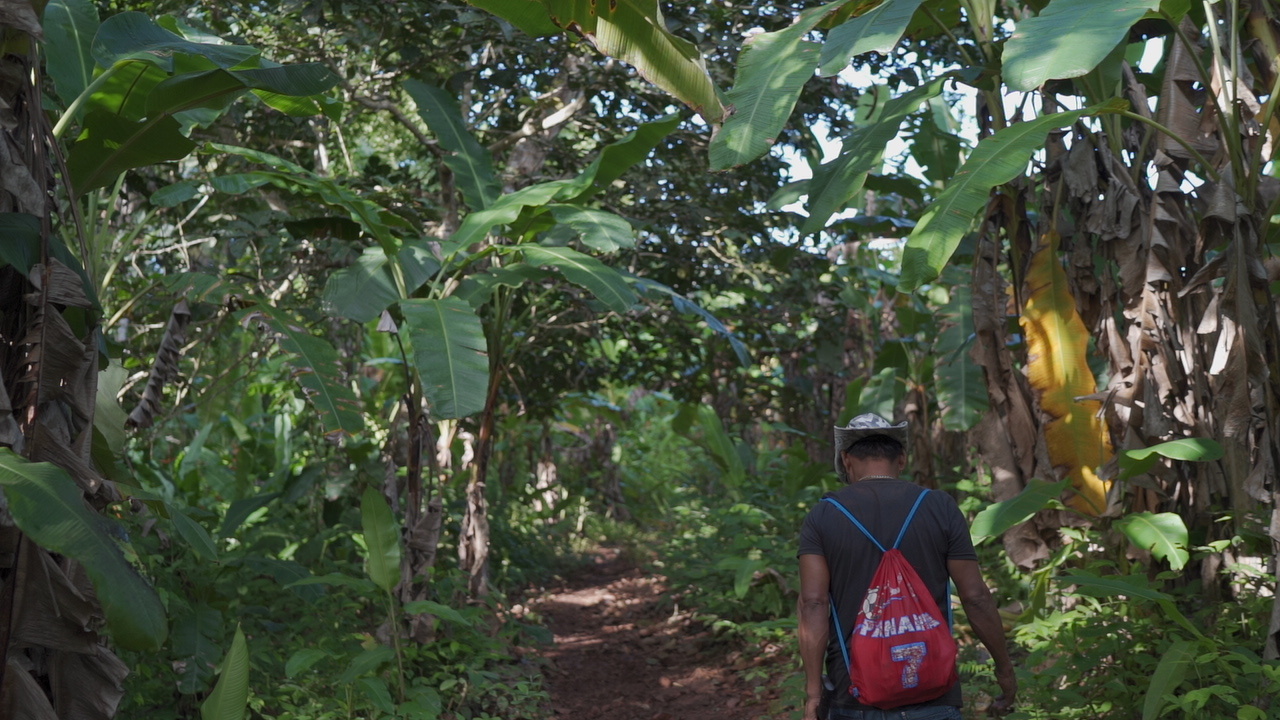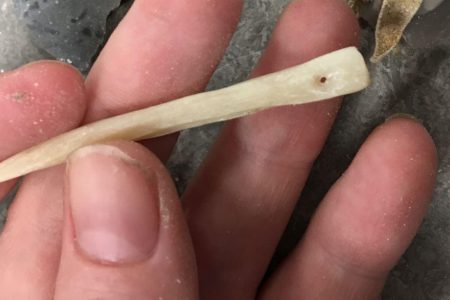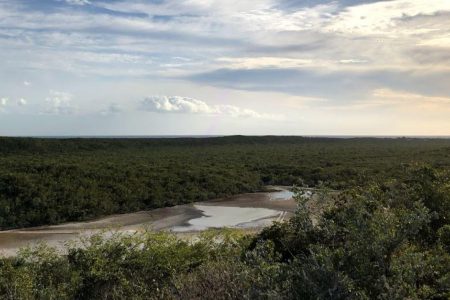Beyond archaeology: why we need an interdisciplinary understanding of the Darién Gap
The Darién region of Panama, the only terrestrial connection between North, Central, and South America, has played a key role in animal, plant, and human mobility since its formation 2.8 million years ago (O’Dea et al., 2016). When the isthmus of Panama rose and bridged the previously separated continents, the Great American Biotic Interchange (GABI) occurred, accelerating the already existing migration trajectories of faunal species from both Americas. Even though the GABI is considered as one of the most relevant events in the history of land mammals (Cione et al., 2015), the later role that humans played in it has been poorly studied, especially in the geographical funnel of Darién. The lack of research on human mobility through Darién is not only circumscribed to past migration waves, such as the peopling of the continent or the gold trade in pre-European times, but also includes today’s global mobility crisis.
Darién today is still fundamental to cultural interchanges and is home to Afro-descendants, Indigenous communities and mestizos, and is used as a transitory route for migrants from as far away as Africa and South Asia who aim to reach the United States. However, contemporary Western narratives concerning Darién have privileged fragmentation rather than integration. For example, Darién’s physical inaccessibility and other more complex global trade factors (Ficek, 2014; 2019) has resulted in the only 106 km gap in the Panamerican Highway, the highway that links the American continent stretching from Alaska to Tierra del Fuego. Additionally, Darién’s double status as a modern political border dividing Panama and Colombia and South and Central America has contributed to its association with disconnectivity. Perhaps because of this, no formal archaeological research had been conducted in the region until the commencement in 2019 of Darién Profundo, a transdisciplinary project hosted at the Faculty of Archaeology (Leiden University). This prior absence of systematic archaeological investigations is surprising given that Spanish colonists built their first mainland American settlements in Darién and encountered a complex Indigenous sociopolitical landscape (Bancroft, 1883).
However, Darién’s imagined (human) geographies have been constructed as an instrumental part of the same matrix of power that first enabled European colonization, and, in the last century, has promoted developmental policies that follow the logic of capitalist expansion. In service of this developmentalist and modernizing model, Darién has been characterized as a natural place (Ficek, 2019) in desperate need of infrastructure projects, which have transformed the region, its landscape, political ecology, and peoples. These fictitious narratives of Darién’s empty and pristine wilderness have been instrumental to neoliberal development projects that are based on Indigenous dispossession (Velásquez Runk, 2012; 2015). More recently, and despite the joint efforts of Indigenous organizations, anthropologists, archaeologists, and ecologists to reframe Darién as a region rich in cultural diversity, natural conservation practices, and Indigenous history (see for example Nelson et al., 2001; Pelletier et al., 2019; Velásquez Runk, 2015), hegemonic discourses have been pushing the narrative backwards to Darién’s ontology as only a jungle.
‘Darién is not a route, it is a jungle’ is an international media campaign launched by Panama’s Ministry of Security in August 2023 as a response to the dramatic increase in irregular migrants crossing Darién on foot (MIRE, 2023). Despite being considered as the most treacherous portion of the Andean Region-Central America-Mexico migratory corridor and even worldwide (Yates and Pappier, 2023), half a million people crossed this tropical forest in 2023 alone. This number is alarming, especially considering that the region—comprised of different administrative units such as the Darién province, the semi-autonomous Indigenous territories of Guna Yala and the comarca Emberá-Wounaan, as well as the the Darién National Park—has a population of roughly 70,000 people (INEC, 2023).
According to local perspectives, gathered during seven different fieldwork seasons carried out between 2019 and 2024, Darién is the ‘forgotten province’ and ‘forgotten region’ of the country. State presence is reduced to security frameworks, generally in the form of the National Border Service (SENAFRONT), in charge of controlling the problematic border with Colombia, (in)famous not only for the above-mentioned mobility crisis but also for the long conflict related to narcotraffic. Darienitas consider that there are three different ‘Dariéns’ (González, personal communication 2022), the first of which is the Darién of the Panamerican highway, created between the 1950’s and 1970’s thanks to government projects that involved the extension of the highway and the creation of the Bayano dam and lake. These infrastructure projects brought settlers from the central provinces, ‘mixed’ (or mestizo) populations that identify as non-Indigenous and non-Afro descendant Panamanians. The second is the Darién of the coast (mainly the Pacific ocean and the Gulf of San Miguel), comprising mostly coastal Afro-descendant towns mainly dedicated to fishing, but also increasingly to cattle ranching, with ancestral identity connections to Colombia. The third is the Darién of the rivers, characterized by Indigenous Emberá and Wounaan populations with strong ties to the lands adjacent to the main rivers, such as the communities of Mogue or Sambú.
Our ethnographic fieldwork has enriched these diverse versions of Darién. For example, the migration corridor to North America overlaps with the three layers described above: migrants walk through the tropical jungle and arrive at Indigenous hamlets, or cross Darien by boat from Juradó, Colombia, stopping by Afro-descendant coastal towns, such as Jaqué (International Crisis Group, 2023). Regardless of which of these two portions of the route they are able to choose from—they entail different costs and risks—they are then usually absorbed by the Operativo Flujo Controlado (OFC), a government run program that manages their route through temporal migrant reception centers, where they are provided with medical care and shelter from a combination of government and non-governmental organizations. Migrants are then transported by private buses—arranged under the framework of the OFC—to the northern province of Chiriquí, where they are placed in temporal centers until they cross the border to Costa Rica.
One of these migration centers, San Vicente (fig. 1), is situated near Metetí, an urbanised town adjacent to the Panamerican Highway. Even though the mestizo population originally from the central provinces of Panama is higher in Meteti than in the coastal and Indigenous (river) towns throughout Darién, Metetí challenges the schematic division of Darién. Emberá and Wounaan peoples walk along the streets as do Afro-descendants, revealing a multiculturality that is absent from the narratives and also present in some coastal towns, such as in Garachiné. Divisions then blur, and both internal and global migration become apparent in towns such as Metetí in diverse ways. As in the rest of Panama—even in very remote areas of Darién—Metetí has its own ‘Chinos’, which are synonymous with small to medium-sized supermarkets and other types of stores run by Chinese people of relatively recent arrival (<10 years) to the region. Apart from this, Metetí hosts a temporary population of non-governmental organization employees, such as personnel working for Doctors Without Borders, and many other NGOs who also temporarily reside in Metetí. Migrants seem to be notably absent, as they are theoretically kept inside the temporary migration centers and face the threat of deportation if they are found circulating freely. Locals express their fears and concerns regarding the migrants; as helping them might lead to accusations of human trafficking and even jail. In spite of this, eating at local restaurants and interacting with people almost immediately reveals the presence of migrants; first-hand testimonies from Venezuelans and Colombians who have crossed the jungle on foot are relatively easy to gather.

Fig. 1: Welcome sign at the San Vicente Migrant Reception Center, Metetí, Darién (picture taken by the author in January 2023).
The number of migrants has reached 2,000 per day, which causes dramatic effects in the local population of Darién, especially among Indigenous peoples (Guevara, 2024), whose relationship to their land is based in a complex entanglement of place-based knowledge (Gill and Donner, 2022). Disruption of their territories, such as the transformation of their ancestral narrow pathways (fig. 2) in wide roads to accommodate the increasing number of people on the move (fig. 3), has deep effects in the conservation of the tropical forest and in their livelihoods. Some communities are experiencing a drop in school registration and partial abandonment of agricultural, gathering, and fishing activities as a result of the creation of informal economic networks surrounding the migration trail (Guevara, 2024). These networks offer outcomes that are considered more lucrative, such as provision of transport and food to migrants.

Fig. 2: example of Indigenous traditional forest pathway not affected by the migrant trail (picture taken in Mogue in 2022 by Espora Media-Darién Profundo).

Fig. 3: example of migrant trail affecting the tropical jungle through deforestation and disruption of ancestral Indigenous pathways (International Crisis Group 2023).
The expansion of cattle ranching, agriculture, logging, and other licit and illicit economic practices not only entail territorial losses for Indigenous peoples, but are also a concrete threat to Darién’s tropical forest (Nelson et al., 2001; Colectivo Darién, 2021). The increase of migrants crossing Darién is therefore a new challenge that builds upon processes that Indigenous tribes were already resisting against. Similarly, the abandonment of Indigenous livelihoods—which have proven to be the most effective for natural conservation—due to marginalizing state policies, inaccessibility to schools, health care, and job opportunities within Indigenous towns has been deepened by the mobility crisis.
How can archaeology contribute to our understanding of the mobility crisis in Darién? The migration trail leaves concrete material traces in Darién’s diverse landscapes which should be studied through archaeological lenses. For example, the materiality of shoewear in Darién has been transformed by the migrant phenomena: an informal market that commercializes different boots used by the populations on the move through the jungle and then discarded when leaving the densely vegetated areas—mainly rubber and leather boots acquired in Colombia (fig. 4)—are then reutilised by local people, even government officials. Migrants then usually switch to the local preferred rubber slippers worn in most non-urban Darién contexts.

Fig. 4: rubber boots discarded after crossing the Darién Gap (UNICEF 2022).
The traces left by the mobility crisis can be studied through archaeological methods from diverse approaches. The study of the materials left behind by migrants, such as boots and trash, is only one of the research lines which can be complemented by other approaches. A focus on the transformation and disruptions of Indigenous cultural, archaeological, and land sovereignty can additionally be studied through a collaborative cartographic perspective. Research into Indigenous governance structures and their sovereignty in relationship to the national government is also fundamental to understanding the historicity of Indigenous entanglements to Darién.
A comprehensive understanding of Darién’s current role in human mobilities cannot be approached solely through archaeological lenses. Interdisciplinary research (see for example the descriptive approaches by Velasco and Cielo, 2023 or Winters, 2019) is necessary to understand the push factors that have driven an increasing number of migrants from around the world to choose Darién as the preferred and necessary route.
The future direction of our research in Darién involves the continuation of the sub-projects already implemented by Darién Profundo, which include the study of the pre-European invasion archaeological sites situated in Garachiné (AD 1000 - 1500), which involve monumental architecture with the employment of molluscs as main construction materials and the massive production of ceramics (Donner and Gill, 2023); the collaboration established with the Emberá tribe in Mogue, that includes the creation of an interpretative ecological pathway that connects the community with two archaeological sites featuring rock art (circa AD 900); and the exploration of possible pre-ceramic sites in the caves of Guayabillo. To achieve this, we work under the framework of Indigenous archaeologies, with research that is co-created and co-designed with local communities (Gill and Donner, 2022). Finally, the project continues to expand its temporal boundaries, in line with the practice of building chronologies beyond arbitrary colonial divides (Donner, 2020), therefore stressing the continuity and longue durée approaches to the archaeology of Southern Central America, and to the neglected Darién Gap.
Reference list
Álvarez Velasco, Soledad and Cristina Cielo. “Circulations and Solidarities in the Darién”. NACLA Report on the Americas 55:4 (2023), 345-349.
Bancroft, Hubert Howe. History of the Pacific States of North America. Vol. 6. San Francisco: A. L. Bancroft and Company, Publishers, 1883.
Cione, Alberto. L., Germán M. Gasparini. Esteban Soibelzon, Leopoldo H. Soibelzon, Eduardo P. Tonni. The Great American Biotic Interchange. A South American perspective. Dordrecht: Springer, 2015.
Colectivo Darién. "Trafficking as settler colonialism in eastern Panama: Linking the Americas via illicit commerce, clientelism, and land cover change." World Development 145 (2021), 105490.
Donner, Natalia. R. The potters’ perspectives: a vibrant chronology of ceramic manufacturing practices in the valley of Juigalpa, Chontales, Nicaragua (cal 400 CE-present). Leiden: Leiden University Press, 2020.
Donner, Natalia R. and Lucy Gill. “Platform-shellmounds and sculptural scenes in Darién, Panama: human and non-human expressions of monumentality in the tropical forest (900 - 1500 CE)”. Paper presented at the symposium Monumentality in Southern Central America: Complexity, inequality, dependency? Perspectives on human and other-than-human relationships, Center for Dependency and Slavery Studies, Bonn University, November 2023.
Ficek, Rosa E. “The Pan American Highway: An ethnography of Latin American integration.” PhD thesis, University of California, Santa Cruz, 2014.
Ficek, Rosa E. "Cattle, capital, colonization: tracking creatures of the Anthropocene in and out of human projects." Current Anthropology 60:S20 (2019), S260-S271.
Gill, Lucy and Natalia R. Donner, 2022. “Archaeological survey as participatory counter-mapping: Indigenous sovereignty and epistemic change in Darién, Panama.” In
Claire Smith, and others (eds), The Oxford Handbook of Global Indigenous Archaeologies. Oxford: Oxford Academic.
Guevara, Helkin, 2024. “Secuelas de la migración en la población de Darién.” La Estrella de Panamá, January 26, 2024. https://www.laestrella.com.pa/economia/secuelas-de-la-migracion-en-la-poblacion-de-darien-MD5959934#google_vignette
Instituto Nacional de Estadística y Censo (INEC), “Resultados Finales Básicos XII Censo Nacional de Población y VIII de Vivienda 2023”, accessed February 29, 2024. https://www.inec.gob.pa/archivos/P00453527620231009162255CUADRO%209.pdf
International Crisis Group. Bottleneck of the Americas: Crime and Migration in the Darién Gap. Latin America Report N°102. Brussels: International Crisis Group, November 2023.
Ministerio de Relaciones Exteriores (MIRE), 2023. “Panamá lanza campaña ‘Darién no es una ruta, es una jungla’. Noticias por mes, August 24, 2023. https://mire.gob.pa/panama-lanza-campana-darien-no-es-una-ruta-es-una-jungla/
Nelson, Gerald C., Virginia Harris, Steven W. Stone, Edward B. Barbier, and Joanne C. Burgess. “Deforestation, Land Use, and Property Rights: Empirical Evidence from Darién, Panama.” Land Economics 77:2 (2001), 187–205.
O’Dea, Aaron, Harilaos A. Lessios, Anthony G. Coates, Ron I. Eytan, Sergio A. Restrepo-Moreno, Alberto L. Cione, Laurel S. Collins, et al. “Formation of the Isthmus of Panama.” Science Advances 2:8 (2016).
Pelletier, Johanne, Nancy Gélinas, and Catherine Potvin. “Indigenous Perspective to Inform Rights-Based Conservation in a Protected Area of Panama.” Land Use Policy 83 (2019): 297–307.
UNICEF. “Las botas de hule.” Microhistorias: La Ruta de la Basura, May 25, 2022. https://www.unicef.org/panama/historias/las-botas-de-hule
Velásquez Runk, Julie. “Indigenous Land and Environmental Conflicts in Panama: Neoliberal Multiculturalism, Changing Legislation, and Human Rights.” Journal of Latin American Geography 11:2 (2012), 21–47.
Velásquez Runk, Julie. “Creating Wild Darién: Centuries of Darién’s Imaginative Geography and Its Lasting Effects.” Journal of Latin American Geography 14:3 (2015), 127–56.
Yates, Caytlin and Juan Pappier. “How the Treacherous Darien Gap Became a Migration Crossroads of the Americas.” Migration Policy Institute, September 20, 2023. https://www.migrationpolicy.org/article/dari%C3%A9n-gap-migration-crossroads






0 Comments